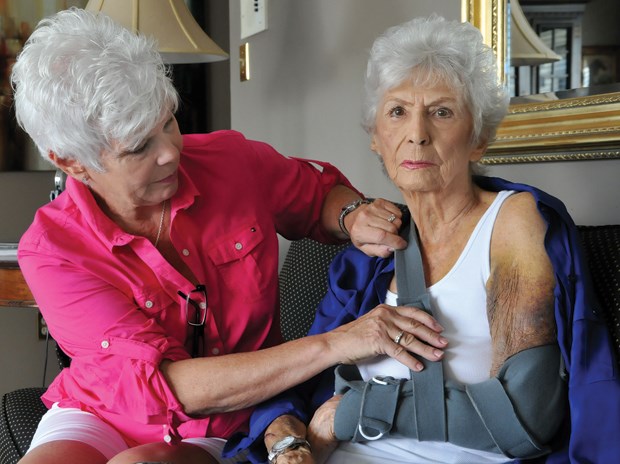B.C.'s firefighters are calling on the province to ramp up 9-1-1 dispatch protocols in the wake of patients facing longer waits for ambulances.
B.C. Emergency Health Services, which runs B.C. Ambulance Service, redrew its resource allocation plan last fall, effectively deprioritizing a number of non-critical injuries and illnesses. Among them: suspected aneurysms, miscarriages and falls resulting in hemorrhages.
The result has been longer wait times, which firefighters say they could help with - if only they were getting the calls.
"We're already at work. We're already there. We're available. We should be sent to the calls. I think we can do a lot of good, even on some minor calls," said Brian Leavold, president of the International Association of Firefighters Local 1183. "We can put them in a position of comfort and deal with the family and get them ready to go so as soon as the ambulance gets there, they can be scooped and run up to the hospital."
One such patient is City of North Vancouver resident Jackie Strom. The 88-year-old fell down a flight of 12 steps on July 17, resulting in a broken arm, serious bruising and several gashes.
Emergency response time "was well over 20 minutes," said Strom's daughter, Deb Gardiner, noting the ambulance station and firehall were both just a few blocks away. "I would have thought that when you get a 9-1-1 call and you're told that an 88- year-old woman has fallen down a flight of stairs, it would have had a higher priority than they obviously did."
Gardiner said it would have been helpful if firefighters were dispatched. "If the firefighters had been there first, they're trained in emergency response and know how to settle somebody and get an idea before the ambulance arrives as to what the situation is," she said.
Leavold said the Ministry of Health could also add a new level of training for firefighters, allowing them to do some patient care they are currently not allowed to do - like administering pain medication or EpiPens for people in allergic shock.
"With the addition of a couple skill sets, we can make it better for the patients and make it better for B.C. Ambulance," he said. "If it's not a life-threatening thing but you're in a lot of pain, like a broken leg or something, it could be up to an hour or more waiting for the ambulance because we can't transport."
There have been cases where firefighters have sent injured patients to Lions Gate Hospital in a cab or when patients drove themselves when they shouldn't, Leavold said.
Leavold rejected the notion that this was simply a "turf war" among first responders.
"As far as I'm concerned, we don't want the ambulance's job. They do a great job. We have a good relationship with the guys over there. There's just not enough of them," he said, noting firefighters also support hiring more paramedics.
But the changes made by the province were necessary to ensure paramedics are available when it is a life and death situation, said Nikki Sieben, chief transformation officer at B.C. Emergency Health Services.
"There were a number of calls, which we, from a clinical point of view with our physician input, determined did not need us to go lights and sirens to those calls," Sieben said. "(The system) needs to make sure the sickest of the sick get to the emergency room as fast as possible ... and that those whose medical condition can wait and isn't going to deteriorate may have to wait longer."
The dispatch system that determines when firefighters should be called still works on the same triage system designed to send the appropriate response, Seiben said.
"The calls they're getting sent to now should be the exact same calls they were getting sent to prior to these changes. None of that has changed," she said.
Sieben said the union's call for better training wouldn't be as simple as it sounds.
"It's about scope of practice for both first responders and where paramedics currently exist, we have a whole licensing board behind us, training regimes, medical oversight programs, all of which have to be considered if we change that. There are discussions that are continually ongoing," she said.
As for more paramedics, Sieben said the province has spent $313 million on ambulance services since 2001, resulting in a 110 per cent increase in the number of paramedics.
"Across the province, we've augmented our services where we can," she said.
North Vancouver-Lonsdale MLA Naomi Yamamoto did not respond to a request for comment on the story.



